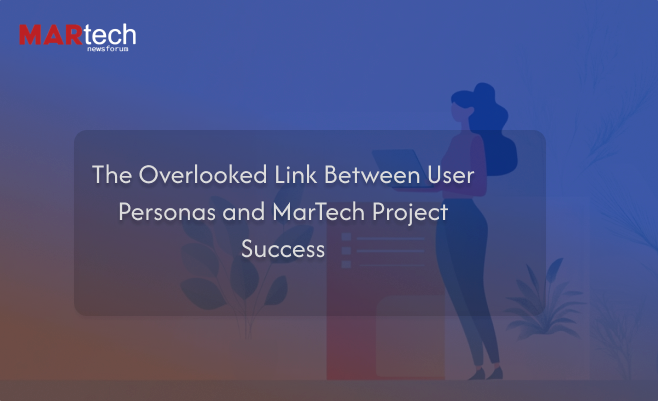
The success rate of MarTech projects is being redefined not just by platform capabilities, but by an element many organizations still undervalue: the integration of detailed, data-backed user personas into project planning and execution.
Recent analysis from multiple industry studies, including the 2025 State of Marketing Technology Report, shows that organizations using persona-driven strategies in MarTech deployment achieve 32% higher platform adoption rates and 27% faster ROI realization compared to those that do not.
Personas as an Operational Asset, Not a Creative Afterthought
While user personas are often created during brand development or campaign planning, their potential as an operational blueprint in MarTech projects is frequently overlooked. Personas consolidate demographic, behavioral, and psychographic data into profiles that guide decision-making at every stage — from vendor selection to feature configuration.
Without this alignment, MarTech projects risk delivering solutions that meet technical requirements but fail to resonate with internal users or customers. A mismatch between platform features and audience needs leads to underutilization, fragmented workflows, and wasted licensing spend.
How Persona Integration Directly Impacts Project Outcomes
Industry data highlights three direct benefits of persona integration in MarTech projects:
- Precision Feature Deployment
Platforms like Salesforce, HubSpot, and Adobe Experience Cloud offer hundreds of features. Personas enable project teams to prioritize those aligned with customer behavior, reducing unused features and increasing operational efficiency. - Improved Data Model Design
Personas guide the structuring of CRM fields, segmentation rules, and automation triggers. This ensures customer journeys in the platform match real-world buyer paths, reducing friction in engagement. - Optimized Personalization
AI-driven personalization tools perform better when powered by persona data. Email recommendations, dynamic website content, and ad targeting become more relevant, increasing conversion rates.
Cross-Departmental Adoption Gains
MarTech success is not only about customer engagement — it is also about internal adoption. Personas serve as a shared reference point for marketing, sales, product, and IT teams, ensuring platform configurations make sense for all stakeholders.
- Marketing teams use personas to define content relevance and channel mix.
- Sales teams align lead scoring models with persona-based buyer intent signals.
- IT teams map integration logic to the most valuable customer journeys, avoiding unnecessary complexity.
This alignment reduces onboarding time for new users and accelerates productivity.
Evidence from the Field
Case studies from [Industry Case Source] reveal measurable impacts:
- A B2B SaaS company increased marketing automation usage from 54% to 88% after embedding persona-specific workflows into its platform.
- A global retail brand achieved a 22% increase in repeat purchase rates by configuring product recommendation engines using persona behavior models.
- A financial services provider cut campaign launch times by 40% by preloading audience segments in their customer data platform (CDP) based on personas.
Best Practices for Persona-Driven MarTech Success
Experts recommend the following structured approach:
- Research Beyond Demographics
Incorporate behavioral analytics, purchase history, and content engagement data into persona profiles. - Link Personas to Data Architecture
Ensure CRM and marketing automation fields reflect persona attributes for accurate targeting. - Test and Iterate
Use A/B testing to validate whether persona-based configurations improve engagement metrics, then refine. - Train Stakeholders
Make personas a part of internal onboarding for marketing and sales teams to ensure consistent usage across departments. - Update Annually
Refresh persona data annually to reflect changes in market behavior and channel preferences.
A Strategic Imperative for 2025 and Beyond
The MarTech sector, projected to reach $412.9 billion by 2030, will see increasing competition for customer attention. In this environment, the organizations that fully embed persona thinking into MarTech projects will differentiate themselves not through the size of their tech stack, but through the precision of their audience engagement.
By aligning technology capabilities with human insights, companies can close the gap between platform potential and realized business value — transforming MarTech from a cost center into a high-performing growth engine.